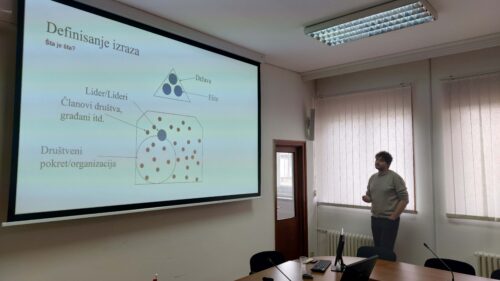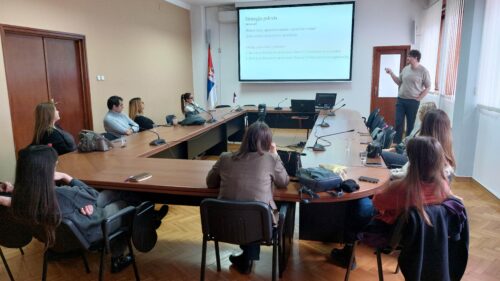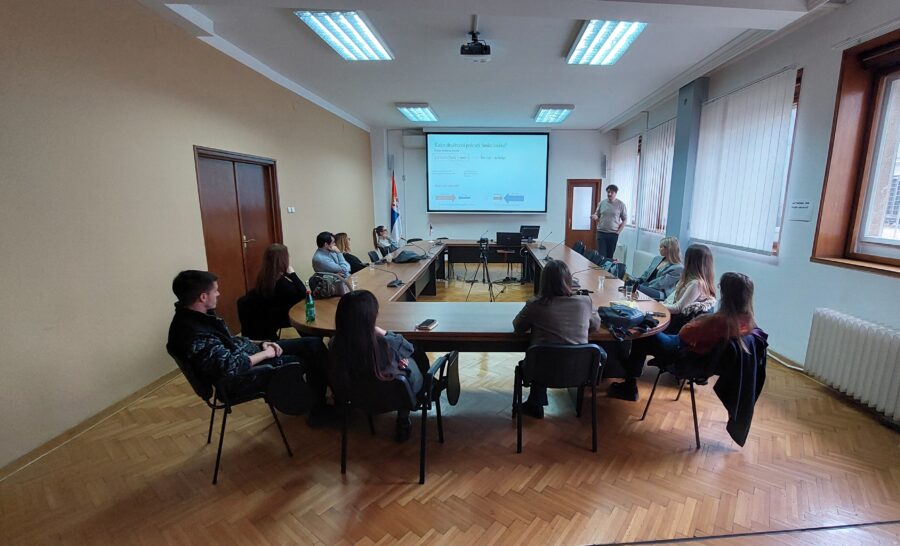Social movements as a form of collective action have become a key political factor in the 21st century, and understanding their strategies, internal dynamics, and relations with elites is essential for interpreting contemporary protests and mass mobilizations. These topics were addressed by Branislav Muškatirović, a junior researcher at the Center for Sociological and Anthropological Research, in a lecture organized on the theme “Grand Strategies of Social Movements.”
Drawing on recent protests in Serbia as part of a broader global phenomenon of spontaneous and planned mass mobilization, Muškatirović pointed to theoretical approaches that enable a deeper understanding of the effectiveness and potential of social movements.
The lecture presented three key aspects of analysis: the grand strategies that movements formulate in response to challenges within the community and the state; the internal processes that develop after a movement becomes organized, as well as the relations between movements and ruling elites; and the organizational forms and use of violence in the pursuit of movement goals. Special attention was given to distinguishing social movements from similar phenomena such as rebellions, strikes, and coups.
Muškatirović identified three types of grand strategies of political movements: spontaneous uprising, mass agitation, and ideological mobilization. These strategies can also be viewed as stages of long-term political action. Although movements often choose one dominant strategy, they frequently combine elements of all three to strengthen their impact. A spontaneous uprising reflects crisis and sudden, intense dissatisfaction; mass agitation implies persistent discontent and the formation of an avant-garde that directs the actions of the masses; while ideological mobilization seeks to build a lasting identity, political education of members, and stable organizational structures that create a core of reliable and mobilized participants.
The lecture also examined how hierarchy affects the functionality of movements, how movements build and use power, and how they achieve their goals–whether through coercion or cooperation with existing elites.
Finally, the lecture was illustrated with historical examples of the application of different grand strategies, with particular reference to the French Revolution, the American War of Independence, the October Revolution, and the Chinese Civil War. The presented socio-cybernetic framework aims to provide a basis for both understanding and planning social movements in contemporary conditions.
The importance of such theoretical approaches, it was concluded, is increasingly evident in the context of the dynamic political and social changes that characterize the early decades of the 21st century.
Branislav Muškatirović’s lecture was organized within the cycle dedicated to presenting newly arrived colleagues at the Institute of Social Sciences.



